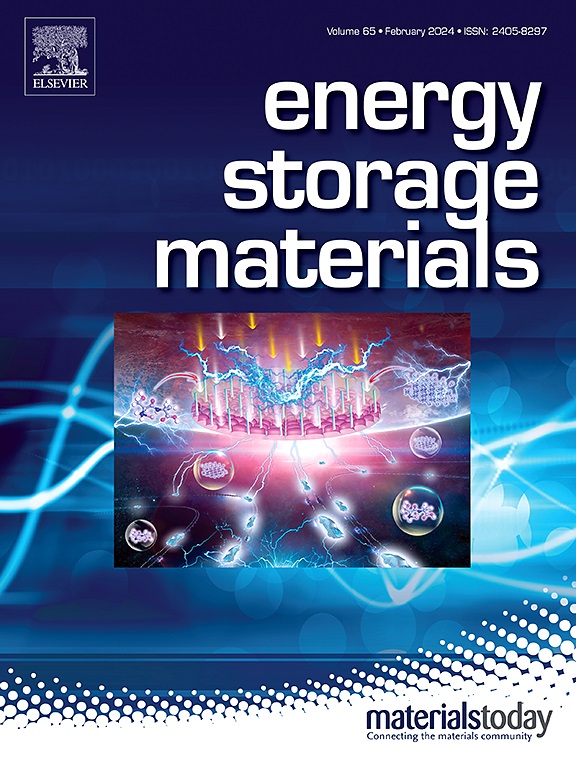Design of d/p-Band Center Regulation Guided by Suppressing Electron Interference for Ultra-stable Iron/Manganese-based Mixed Phosphate Cathode
IF 18.9
1区 材料科学
Q1 CHEMISTRY, PHYSICAL
引用次数: 0
Abstract
Iron/manganese-based mixed phosphate, characterized by its remarkable energy density and structural stability, emerges as a formidable contender for the next generation of commercial sodium-ion battery cathode materials. However, due to the 3d5 electronic configuration of Mn2+, the d-orbitals are in a half-filled state, which results in uneven charge distribution. Therefore, we propose the design of d/p-band center regulation for Na4Fe2Mn(PO4)2(P2O7). As a result, the electronic interference resulting from electronic localization is effectively mitigated. Through lattice reconstruction, the internal strain within the material is alleviated, and the Mn Jahn-Teller synergistic distortion is effectively suppressed, thereby enhancing the structural stability and electronic transition capability. Furthermore, the introduction of defect engineering for charge compensation alleviates the restricted diffusion of sodium ions due to the exacerbation of P2O7 distortion. Based on this, the modified iron/manganese-based mixed phosphate shows high energy density and ultra-long cycle stability, indicating significant potential for large-scale applications in sodium-ion batteries.

抑制电子干扰的超稳定铁/锰基混合磷酸盐阴极d/p波段中心调控设计
铁/锰基混合磷酸盐具有显著的能量密度和结构稳定性,是下一代商用钠离子电池正极材料的有力竞争者。然而,由于Mn2+的3d5电子构型,d轨道处于半填充状态,导致电荷分布不均匀。因此,我们提出了Na4Fe2Mn(PO4)2(P2O7)的d/p波段中心调节设计。因此,有效地减轻了由电子定位引起的电子干扰。通过晶格重构,减轻了材料内部的应变,有效抑制了Mn Jahn-Teller协同畸变,从而提高了结构稳定性和电子跃迁能力。此外,电荷补偿缺陷工程的引入缓解了由于P2O7畸变加剧而限制钠离子扩散的问题。在此基础上,改性的铁/锰基混合磷酸盐具有高能量密度和超长循环稳定性,在钠离子电池中具有大规模应用的潜力。
本文章由计算机程序翻译,如有差异,请以英文原文为准。
求助全文
约1分钟内获得全文
求助全文
来源期刊

Energy Storage Materials
Materials Science-General Materials Science
CiteScore
33.00
自引率
5.90%
发文量
652
审稿时长
27 days
期刊介绍:
Energy Storage Materials is a global interdisciplinary journal dedicated to sharing scientific and technological advancements in materials and devices for advanced energy storage and related energy conversion, such as in metal-O2 batteries. The journal features comprehensive research articles, including full papers and short communications, as well as authoritative feature articles and reviews by leading experts in the field.
Energy Storage Materials covers a wide range of topics, including the synthesis, fabrication, structure, properties, performance, and technological applications of energy storage materials. Additionally, the journal explores strategies, policies, and developments in the field of energy storage materials and devices for sustainable energy.
Published papers are selected based on their scientific and technological significance, their ability to provide valuable new knowledge, and their relevance to the international research community.
 求助内容:
求助内容: 应助结果提醒方式:
应助结果提醒方式:


